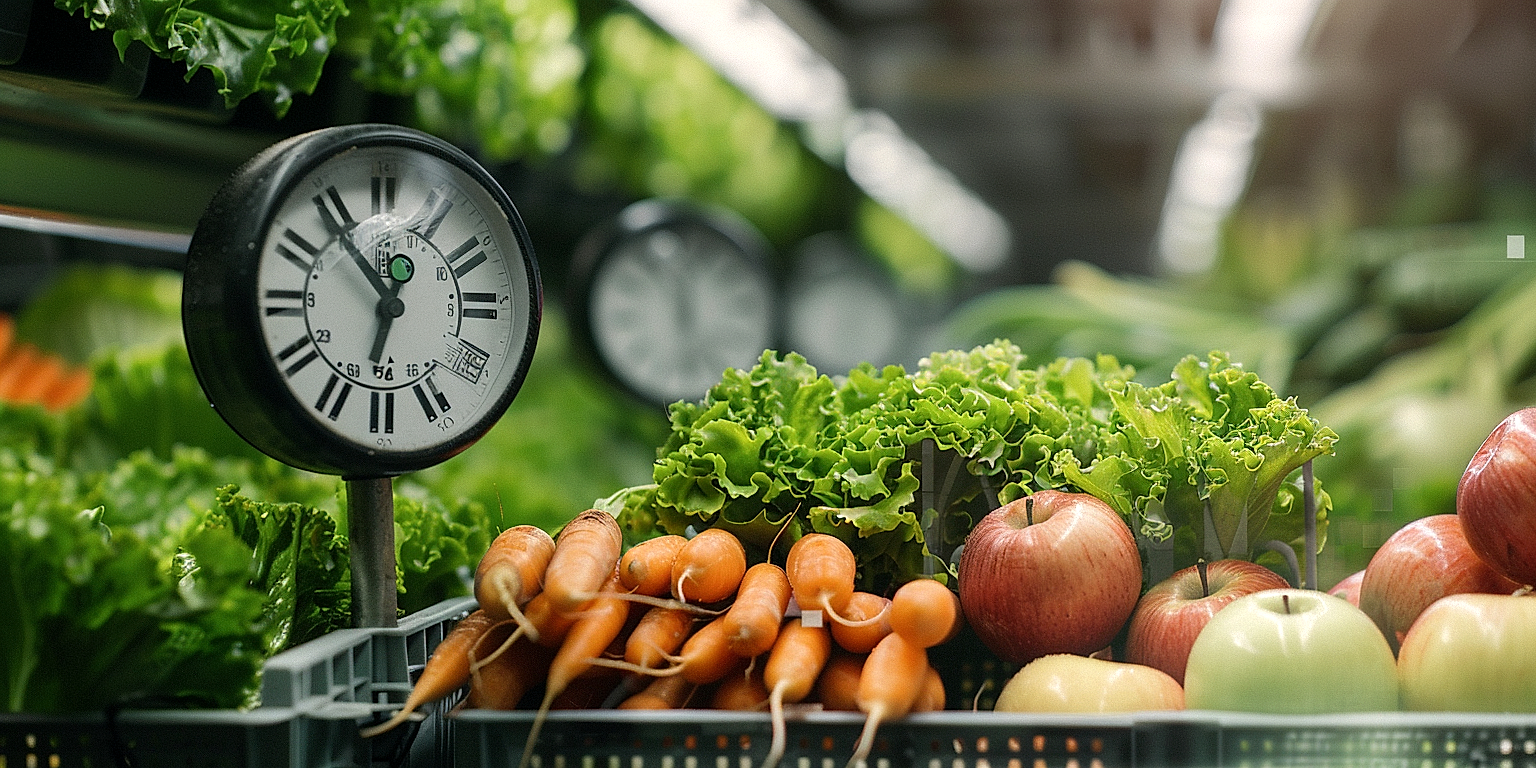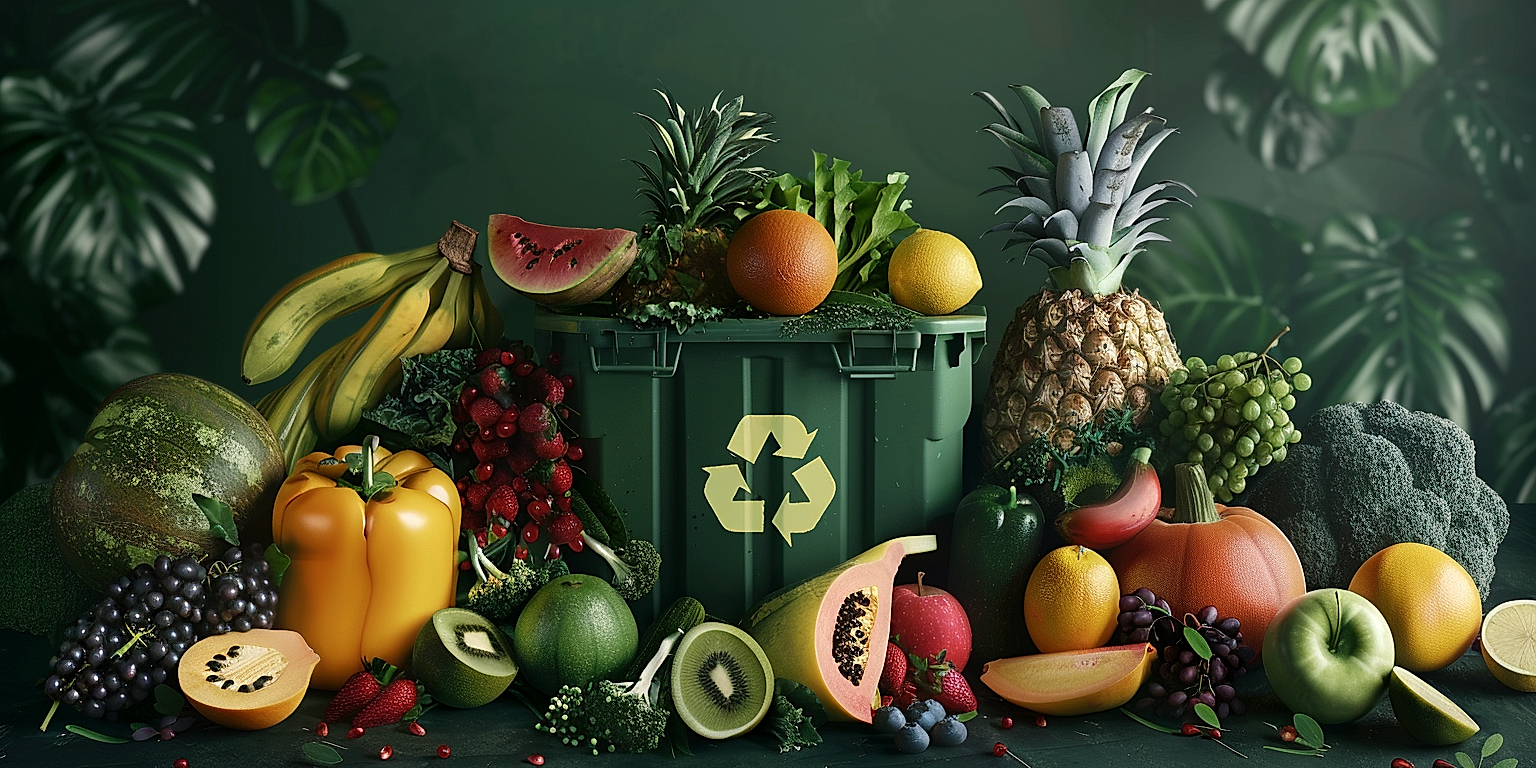In the rapidly evolving world of agriculture and food processing industries, efficient waste management has become a pressing concern.
Leftover waste is far from just an eyesore; it poses serious environmental risks and squanders potential opportunities for profit.
Finding novel ways to repurpose waste derived from produce processing, especially, is a priority for eco-conscious businesses.
With the right strategies, this waste can be transformed by-products full of value.
It’s not just about being sustainable.
It’s also about smart economics and environmental stewardship combined.
Contents
Ways To Repurpose Waste From Produce Processing
1. Converting fruit peels into organic compost.
One method of repurposing waste from produce processing is by converting fruit peels into organic compost.
Large amounts of fruit peels and other organic waste are created in household kitchens, supermarkets, and especially in the food processing industry, which can be used as a resource rather than waste.
This fruit peel composting is not only simple but also an environmentally friendly method of managing organic waste.
Let’s start with the basics: compost is the result of various organic materials decomposing and breaking down into a rich soil-like substance.
Fruit peels, which are often thrown away, are in fact filled with nutrients that can help plants grow and promote soil health.
With composting, you’re returning nutrients back into the soil leading to healthier plants and gardens.
Composting fruit peels is a straightforward process that requires only a few simple steps.
First, ensure to collect all fruit peels and other organic materials such as vegetable waste, grass cuttings, and coffee grounds.
Next, add the gathered materials into a compost bin or heap in your garden and allow it to decompose naturally.
Keep in mind to turn the compost regularly with a shovel or pitchfork, ensuring they break down evenly and increases the speed of the composting process.
Controlling moisture levels is also important; the compost pile should be kept moist but not saturated, to aid decomposition while avoiding foul odors.
Over time, the fruit peels and other collected materials will decompose and turn into a dark, rich soil supplement that can be used in your garden.
The entire process of composting can take anywhere from two months to a year, depending on the size of the compost pile and the materials contained within it.
It’s essential to realize that composting is not only an excellent way to reduce waste, but it is also beneficial to the plants and to the soil underneath it.
Through composting, we can convert what was once considered waste, into a valuable resource for our gardens and reduce our overall environmental footprint.
The simple act of composting fruit peels brings us one step closer to living a sustainable and eco-friendly lifestyle.
2. Using spent grain for animal feed.
Spent grain, a byproduct from the brewing industry, proves an excellent source of essential nutrients for livestock.
Given their high fiber and protein contents, the grains are ideal for reducing food waste while simultaneously benefiting the agricultural sector.
This unassuming waste product is often overlooked, yet it can save farmers considerable resources and aid in the sustainable management of food businesses.
The fermentation process used in brewing leaves the grains enriched with proteins and fibers which are beneficial for animals.
Such waste product is not only a cost-effective feed option, but it also promotes better health in livestock.
While it benefits the farmers economically, it also introduces flexibility into the food supply system, effectively transforming a waste problem into a resource opportunity.
In most cases, spent grains are available for free, or at a very low cost, from breweries, reducing the expense of feeding large herds.
The environmental benefits of repurposing spent grains are countless, from reducing greenhouse gas emissions by keeping waste out of landfills, to promoting circular economy and conservation farming.
On top of that, the conversion process is straightforward and requires minimal processing, generally just drying and sometimes milling, before it can be used in animal feed.
Yet, despite these many advantages, awareness and utilization of spent grain as animal feed amongst farmers remain unexpectedly low.
Promotion and sharing of knowledge about this miraculous waste product can play a key role in its mainstream adoption within the farming industry.
Moreover, the practice leans strongly towards the principles of sustainable development, and can significantly aid agri-businesses towards achieving environmental, economic and social sustainability.
A broader adoption of spent grains as animal feed can also help drive down animal feed prices by providing an abundant, nutritious, and low-cost alternative.
Given its immense benefits and potential, policy support and scientific research could greatly bolster spent grains’ role and effectiveness as an alternative feed source.
Thus, the simple act of repurposing spent grain could lead to deep-rooted transformation in the agriculture sector and contribute significantly to sustainable farming practices and food waste management.
Therefore, it’s high time that we viewed spent grains not as waste, but as a valuable resource that has the potential to significantly contribute to the livestock industry and the environment.
3. Turning vegetable waste into biofuel
Vegetable waste carries an immense amount of untapped potential in the path towards sustainable energy sources.
One of the most intriguing ways to put vegetable waste to work is by converting it into biofuel.
This not only helps in reducing the volume of waste but also presents a cleaner and more environmentally-friendly alternative to fossil fuels.
The process involves the conversion of the inherent energy in vegetable waste into a type of biogas through anaerobic digestion.
Biofuel, produced from vegetable waste, emits fewer greenhouse gases when compared to conventional fuels, reducing our environmental impact.
This form of recycling vegetable waste not only promotes a circular economy but contributes to the efforts towards limiting the progression of global warming.
The biofuel industry is now recognizing the economic viability and environmental benefits of converting vegetable waste into an energy source.
Such initiatives can revolutionize waste management systems in produce processing industries, and establishing a circular approach to waste.
Vegetable waste, which was once regarded as a problem, can become a resource contributing to a sustainable energy future.
Moreover, the integration of this practice in produce processing industries can significantly reduce the operation costs, as the energy produced can be fed back into the system.
While the technology to convert vegetable waste into biofuel is not new, applying it on a large scale in produce processing industries is a novel concept.
It necessitates significant initial investment and a shift in traditional business models to accommodate for sustainable practices.
Nevertheless, the potential benefits, both in terms of financial savings and environmental impact, justify the transition.
In the face of climate change and resource scarcity, it is imperative to explore innovative uses for what was once thought of as waste.
Turning vegetable waste into biofuel certainly holds the promise of combating these challenges, presenting an opportunity that should not be overlooked.
4. Creating natural dyes from food scraps.
Food waste has several potential uses, and one amongst such uses is the creation of natural dyes.
Food scraps, particularly fruits and vegetables, hold a treasure trove of colors that can be harnessed for dyeing purposes.
Onion skins, beetroot peels, and avocado pits, for instance, are known to produce vibrant hues.
This utilization of food waste does not only yield beautiful dyes but also contributes significantly to environmental conservation as natural dyes become a practical alternative to synthetic ones.
Synthetic dyes, while being efficient in their colour potency, bleed harmful chemicals into our waters, making the adoption of natural dyes from food waste a healthier and eco-friendly choice.
Creating these dyes at home or in industrial settings is relatively simple and requires just a few ingredients.
Firstly, the food scraps must be boiled in water, and the resultant colored liquids are the dyes.
The color intensity depends on the concentration of the food waste and the duration of boiling.
Additionally, adding a mordant, a substance that helps the color bind with fabrics, can make the dye last longer on fabrics.
Examples of natural mordants include vinegar and salt, which are typically used in DIY dyeing projects.
While the process sounds straightforward, it is worth mentioning that creating natural dyes requires experimentation and can be a process of trial and error.
One might have to try boiling different types of food waste in various concentrations and for different duration to achieve the perfect color.
However, such a process gives ample room for creativity and can result in the discovery of unique and beautiful hues.
Considering all these factors, using food waste for creating natural dyes can be an exciting and fulfilling hobby for those interested in arts and crafts.
More importantly, the entire process reflects the philosophy of ‘Waste not, want not’ and shows how consciously utilizing waste can lead to creative outcomes, while also aiding environmental conservation.
5. Making cosmetic products from fruit extracts
As part of the broader efforts to promote sustainability in various ways, a growing trend has been noticed in the cosmetics industry; the use of fruit extracts in producing beauty products.
Interestingly, these extracts, which are often perceived as being waste, can be repurposed into valuable resources that contribute to the sustainability of the formulative cosmetic industry.
A perfect example of such waste repurposing can be seen in the use of grape seed extract which is one of the by-products of wine processing
The grape seed extract happens to be rich in polyphenols, potent antioxidants that can counter free radical damage and support skin health.
For instance, grape seed extract has been found to improve elasticity of the skin, reduce the appearance of age spots and help in brightening the skin.
Extracts from various fruits have found a significant spot in the cosmetics industry, being utilized in manufacturing different beauty products and contributing towards the principles of sustainability.Talking about how this has been implemented, a wide array of cosmetic products have been developed from these fruit extracts, ranging from skincare products to makeup to hair products and even bath products.
These products cover a broad spectrum, including body lotions, creams, serums, facial masks, shampoos and even lipsticks.
Another fascinating example can be seen in the use of apple extracts in beauty products.
Apple extracts are rich in vitamins and amino acids, which means they can be very beneficial in promoting skin and hair health.
They are used in products designed for reducing wrinkles and fine lines, for improving skin elasticity, and in those seeking to delay the natural ageing process.
In addition to grapes and apples, numerous fruits such as berries, citrus fruits, avocados and many more can have extracts beneficial for use in cosmetic products.
It is quite evident that the trend of using fruit extracts in cosmetic products is not only an ingenious way of repurposing waste from fruit processing but it also contributes to the sustainability and natural appeal that consumers are now seeking in products.
Moreover, with the exhaustive range of fruits available with their various health benefits, the possibilities for growth and innovation in the cosmetic industry using fruit extracts is immense.
Therefore, it is necessary for industries to invest more in research and development to explore the other potential benefits and applications of fruit extracts in cosmetic products.
The Bottom Line
It’s crystal clear that transforming food waste into beneficial products is not only an impactful practice for environmental conservation but offers a wide array of possibilities in various sectors.
Organic compost from fruit peels, animal feed from spent grain, biofuel from vegetable waste, natural dyes from food scraps and cosmetic products from fruit extracts are just a handful of examples.
By intelligently repurposing what would otherwise be discarded, we can create sustainable systems that propel us towards a more circular economy.
Indeed, every bit of waste saved marks a significant stride towards ensuring environmental sustainability.




